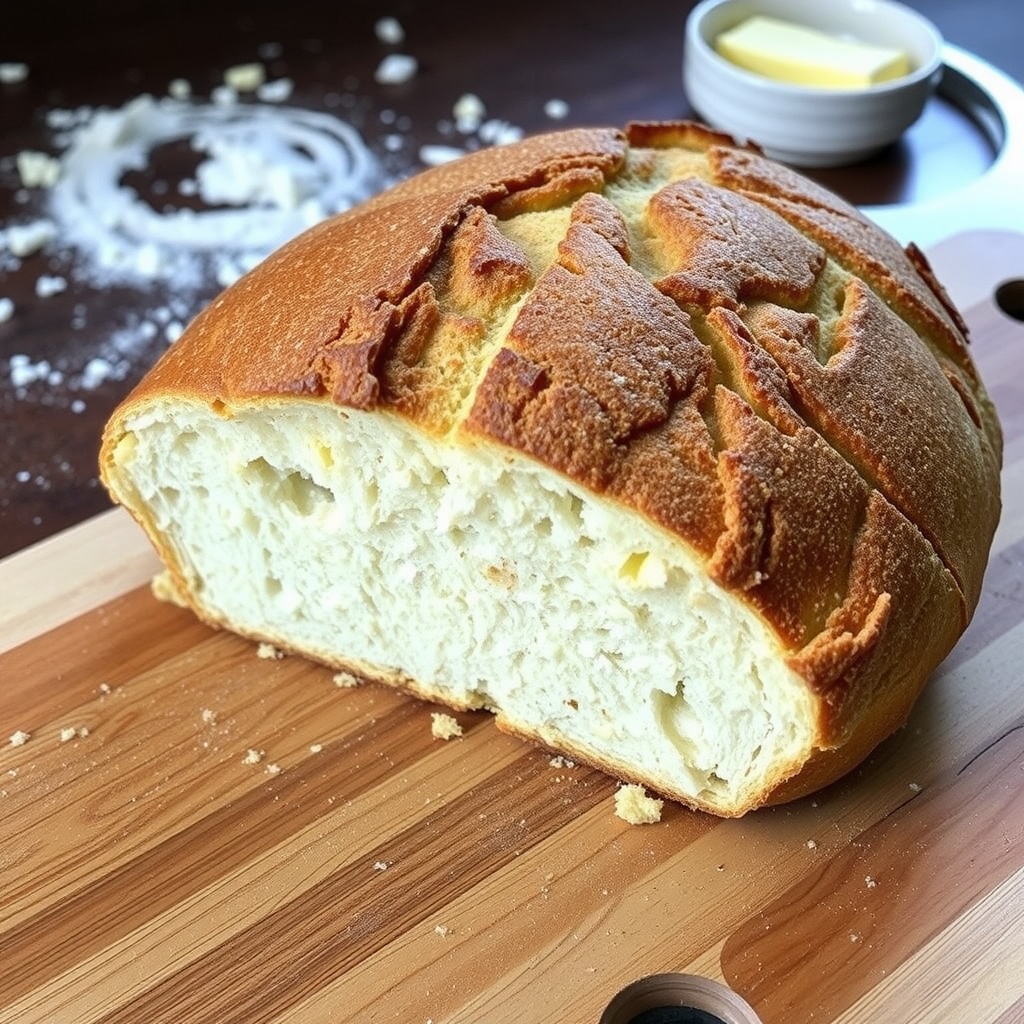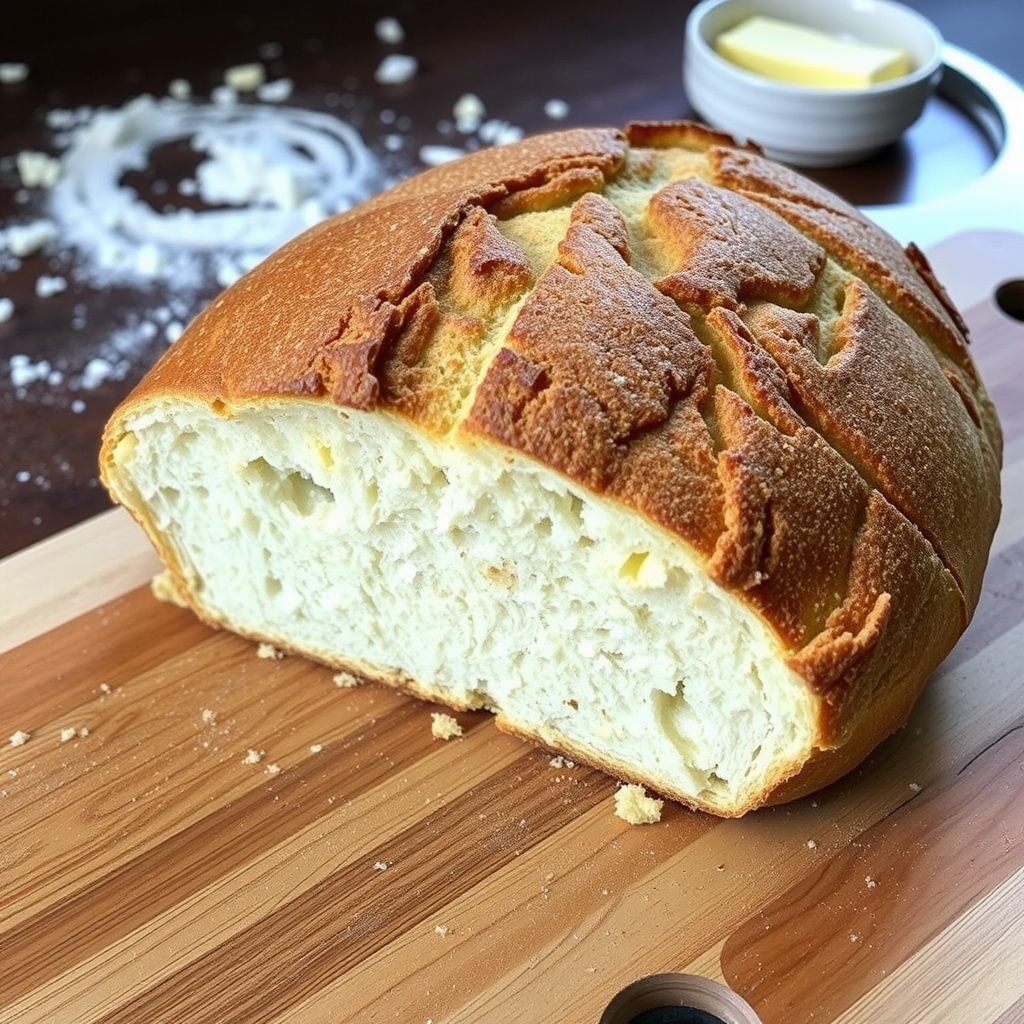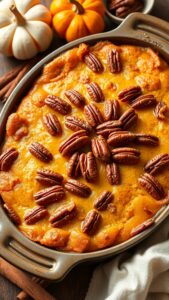Have you ever wanted to bake a loaf of bread that has a golden, crisp crust and a soft, airy interior? This classic crusty sourdough bread recipe will take your baking skills to the next level. You’ll impress your family and friends with the rich flavor and delightful texture of this homemade masterpiece. Whether you’re a novice or a seasoned baker, this recipe is easy to follow and rewarding.
Sourdough bread types can vary greatly, but this recipe captures the essence of traditional sourdough with a simple approach. With just a few ingredients and a little patience, you’ll create a loaf that’s perfect for sandwiches, toasting, or simply enjoying with butter.
The Allure of Sourdough Bread
Sourdough bread has a unique charm that captivates both novice and seasoned bakers alike. With its signature tangy flavor and chewy texture, this type of bread stands out among various sourdough bread types.
Creating a beautifully baked loaf of crusty sourdough bread is an enriching experience. The process allows bakers to connect with the art of fermentation, giving rise to a loaf that is both nutritious and flavorful.
When you serve a warm slice of this classic crusty sourdough bread, the inviting aroma and golden-brown crust set the stage for a cozy atmosphere that encourages sharing and enjoyment.
Understanding the Ingredients
The beauty of this crusty sourdough bread recipe lies in its simplicity. Just four key ingredients work together to create a loaf that delights the senses.
Bread flour provides the necessary structure, while water hydrates the mixture, activating the flour’s gluten. An active sourdough starter contributes a rich depth of flavor, and salt enhances the overall taste.
These components blend to create a dough that transforms into a crusty, airy loaf through the magic of fermentation and baking.
The Baking Process
Baking sourdough bread involves patience and a few crucial steps that ensure success. Beginning with mixing the ingredients, it’s essential to create a cohesive dough before allowing it to rest.
This resting period, or autolyse, hydrates the flour and starts the gluten development. After incorporating the starter and salt, the bulk fermentation phase begins, where the dough stretches and folds to build strength.
Shaping the dough is an art in itself. The goal is to create surface tension, which helps achieve that coveted crust.
The Importance of Rising Times
Rising times play a critical role in developing the flavors and texture of sourdough. The initial bulk fermentation can take several hours, influenced by ambient temperature and the starter’s activity.
After shaping, the second rise in a proofing basket allows the dough to relax and expand. Each phase contributes to the final result, ensuring a loaf with a crisp crust and soft, airy interior.
Baking to Perfection
As the dough nears completion, preheating the oven is vital. A hot baking environment, particularly when using a Dutch oven, creates steam that promotes a bubbly, crusty surface.
The timing of baking—first covered and then uncovered—allows for a golden crust to form while keeping the inside moist.
Allowing the bread to cool on a wire rack is a final touch that helps set the crust, making slicing easier and preserving that delightful texture.
Enjoying Your Creation
Once that fragrant, crusty loaf is ready, it’s time to enjoy the fruits of your labor. Whether served with butter, transformed into sandwiches, or paired with soups, the possibilities are endless.
Each slice of crusty sourdough bread tells a story of patience, skill, and the joy of baking.
Gather around the table with loved ones, share the experience, and savor the rich, homemade flavor that only freshly baked sourdough can provide.
The Ultimate Crusty Sourdough Bread Recipe

This crusty sourdough bread is characterized by its chewy texture and tangy flavor, resulting from the natural fermentation process. The crust is perfectly crisp, while the inside is soft and slightly chewy, creating a delightful contrast that’s hard to resist.
Ingredients
- 500g bread flour
- 350g water, at room temperature
- 100g sourdough starter, active and bubbly
- 10g salt
Instructions
- Mix Ingredients: In a large bowl, combine the bread flour and water. Mix until there are no dry spots. Let it rest for 30 minutes to allow the flour to hydrate.
- Add Sourdough Starter and Salt: Add the active sourdough starter and salt to the dough. Mix until fully incorporated.
- Bulk Fermentation: Cover the bowl with a damp cloth and let it rise at room temperature for 4-6 hours, stretching and folding the dough every 30 minutes during the first 2 hours.
- Shape the Dough: After the bulk fermentation, turn the dough out onto a lightly floured surface. Shape it into a round loaf, using your hands to create tension on the surface.
- Second Rise: Place the shaped loaf seam-side up in a floured proofing basket. Cover and let it rise for another 2-3 hours.
- Preheat Oven: About 30 minutes before baking, preheat your oven to 450°F (230°C) and place a Dutch oven inside to heat.
- Bake the Bread: Carefully remove the hot Dutch oven, place the dough inside (seam-side down), and cover with the lid. Bake for 30 minutes covered, then another 15-20 minutes uncovered until golden brown.
- Cool: Let the bread cool on a wire rack for at least 1 hour before slicing to allow the crust to set.
Cook and Prep Times
- Prep Time: 30 minutes
- Rest Time: 6-9 hours
- Total Time: 7-9 hours
Nutrition Information
- Servings: 1 large loaf
- Calories: 150kcal per slice
- Fat: 0.5g
- Protein: 4g
- Carbohydrates: 29g


